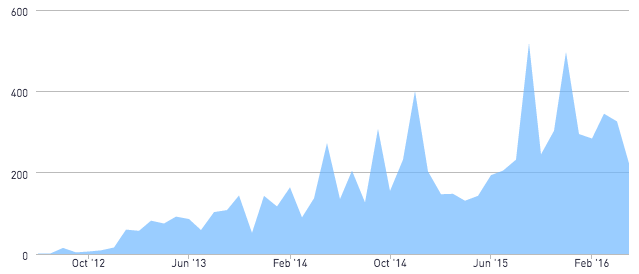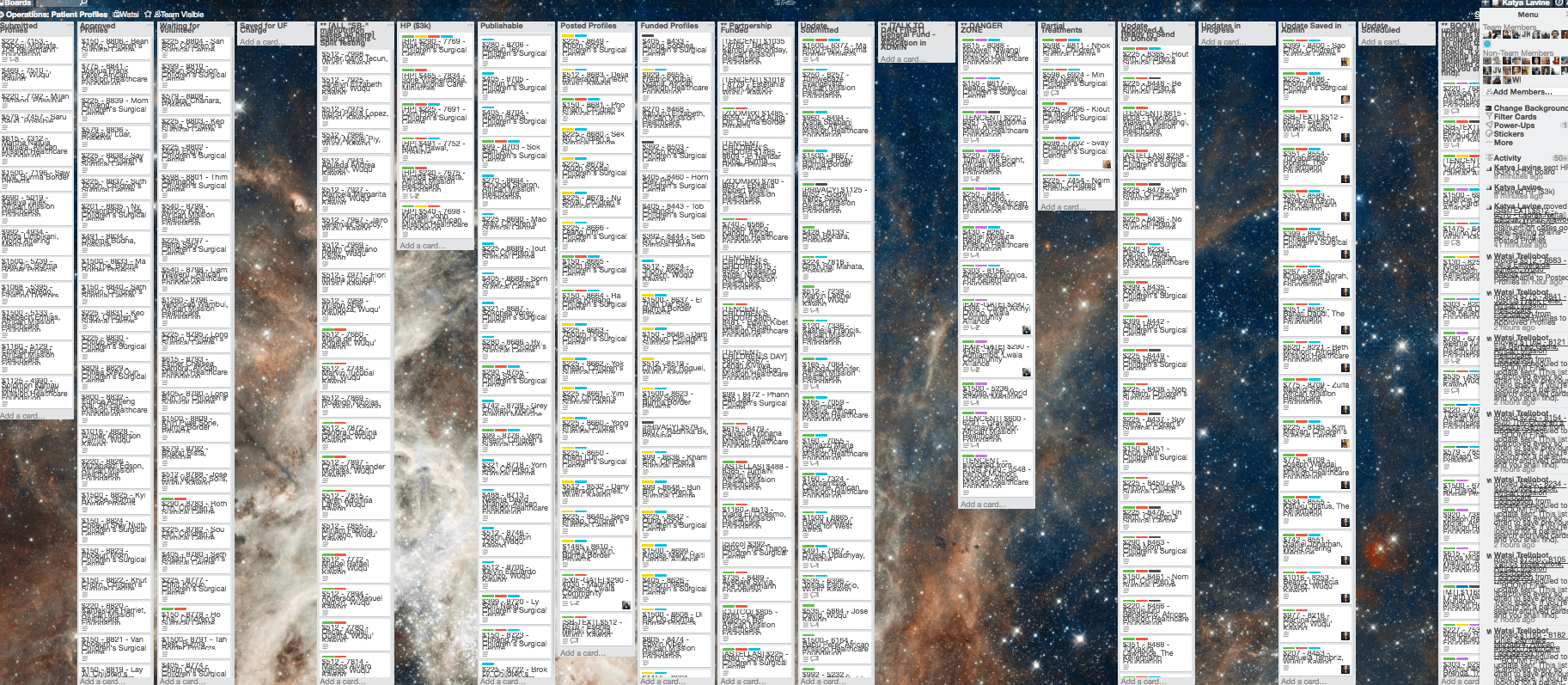Last year, I gave my dad a Watsi gift card for his birthday. I watched him go on the homepage and read the patients' stories. I was curious who he’d donate to, and how he’d make his choice.
The patient he funded was Khin Chit, a 20-year-old woman from Burma.
“Why’d you donate to her?” I asked.
He’d had a close childhood friend die of atrial septal defect (ASD), the same congenital heart defect that Khin Chit had. For my dad, the chance to fund Khin Chit’s treatment felt like a way to honor his friend.
Every day, we hear from donors who have had similar experiences as my dad. They read a patient story and, in any number of ways, they feel a connection to that patient.
This direct, person-to-person connection is the core of Watsi. By surfacing the individual stories of global health, we're breaking down statistics into real people. And we're working with our medical partners on the ground to ensure we're telling patient stories honestly, and with dignity.
We've shared over 8,000 patient stories on Watsi since we launched in 2012. These stories have resulted in fully-funded healthcare for every patient.

Moving patients through Watsi for funding requires a lot of steps - both for our medical partners and for our team. In 2012, we set up our first patient storytelling system on Trello. Our partners on the ground collected, translated, and submitted patient stories to Watsi for approval, and our team of volunteers turned doctor and staff notes into stories for the site.

Now, four years later, we're facing the best problem there is to face: we have too many patients moving through our system to keep up with.
With 300+ patients submitted to Watsi per month - and another 300+ treatment updates to read, edit, and send - we had to ask ourselves some questions. How can we keep telling well-curated, dignified patient stories at scale? How can we rethink our operations to manage this patient flow while maintaining story quality and authenticity?

With the help of our stellar engineering and design team, we've launched a few major changes to streamline our patient storytelling process. But there's one part that we're committed to leaving in human hands: patient stories.
Here are some of the changes:
- Medical partners will now have the chance to tell patient stories directly. From now on, the stories you see on Watsi will be in the first person from the perspective of the Watsi representative on the ground - sitting with the patient, and collecting their information directly. Not only will this allow for greater authenticity in each story, but it will move Watsi toward being a sustainable platform for our partners to use.
- Volunteers will spend less time re-writing patient stories. Our small team of volunteers are now all editors, making changes for grammar, spelling, and clarity when necessary.
- Patient stories will take less time between submission and publishing on the site. This leads to more continuity with their treatment date, and a quicker turnaround time for the transfer of funds for their treatment.
And in the coming months, more changes are coming to patient pages. We’ll surface detailed information about specific medical conditions and treatments, background on our partner hospitals, and the name of the hospital staff member who submitted the story. We think this is all important for donors to know, and it's part of our commitment to transparency.
We hope that these new stories foster a deeper connection between donors and patients. Stories are the core of Watsi - and when partners on the ground have the chance to share them directly, they become more powerful.
Have questions or thoughts about these changes? Email me at katya@watsi.org, or tweet us @watsi
Katya Lavine
I manage medical partnerships @ Watsi